Routersim Ccna Network Visualizer
"Routersim Ccna Network Visualizer" in Software Title
1. Network Visualizer - CCNA Network... RouterSim Network Visualizer 4.0 is a CCNA network simulator that allows you to design, build and configure your own network with drag and drop design. Use unlimited devices, 432 commands and work with 233 supported labs in building your virtual.
2. killtest CCNA certification 640-801... High quality and Value for the 640-801 Exam.Killtest Practice Exams for Cisco Certified Network Associate (CCNA) 640-801 are written to the highest standards of technical accuracy, using only certified subject matter experts and published authors.
3. SimulationExams.com CCNA Intro Exams 1.0 About CCNA Intro- The exam is one of two-part CCNA. CCNA 640-801 can be taken in one sitting (by taking 640-801 exam) or in two sittings (by taking CCNA Intro and CCNA ICND separately).
4. SimulationExams.com CCNA ICND Exams 1.0 About CCNA Intro- The exam is one of two-part CCNA. CCNA 640-801 can be taken in one sitting (by taking 640-801 exam) or in two sittings (by taking CCNA Intro and CCNA ICND separately).
5. CCNA Practice Tests 3.1.0 About CCNA - Cisco Certified Network Associate certification is awarded by Cisco(R) Systems on successful completion of CCNA (Exam code: 640-607) exam. CCNA is a foundation level certification offered by Cisco(R).
Download Now

 Enjoy The Downloading
Enjoy The Downloading More.....
Main Menu
When you double-click on the CCNA Network Visualizer 6.0 icon on your desktop the CCNA™ Network Visualizer® 6.0 Main Menu appears at the top of your screen.


This screen is the "gateway" to the rest of the program. On this screen you will add devices and save network layouts. Once you have created a network you can then double-click a device and bring up a console screen. With the device console screen you can configure the device. Also, as you configure your devices you can summon up a Net Configs window to display network configurations.

Network Configurations
You can view the configurations for all devices in your RouterSim Network Visualzier™ screen. In fact, you can see configurations for devices for several RouterSim Network Visualizer™ screens if they are loaded.

You may forget passwords that you enter while configuring devices. You can look them up by clicking the Net Configs button.

We provide step-by-step labs that, for the most part, build on each other. Eleven different network layouts are presented within these labs.
Cisco IOS Network Layout

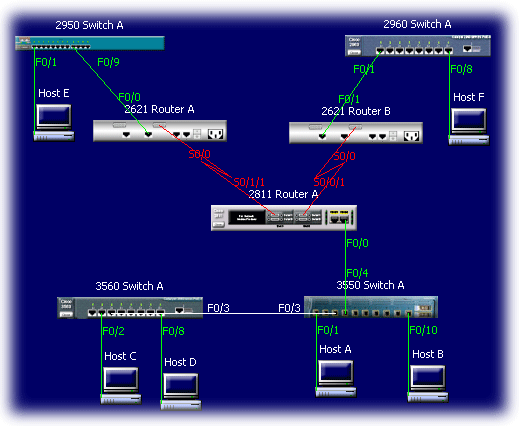
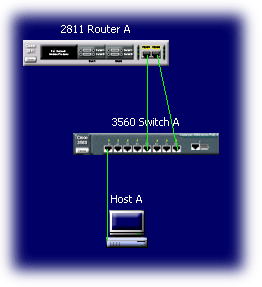

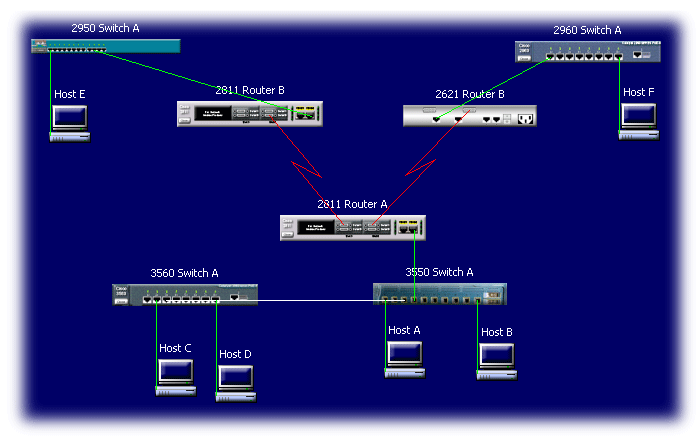

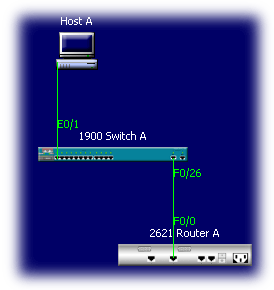

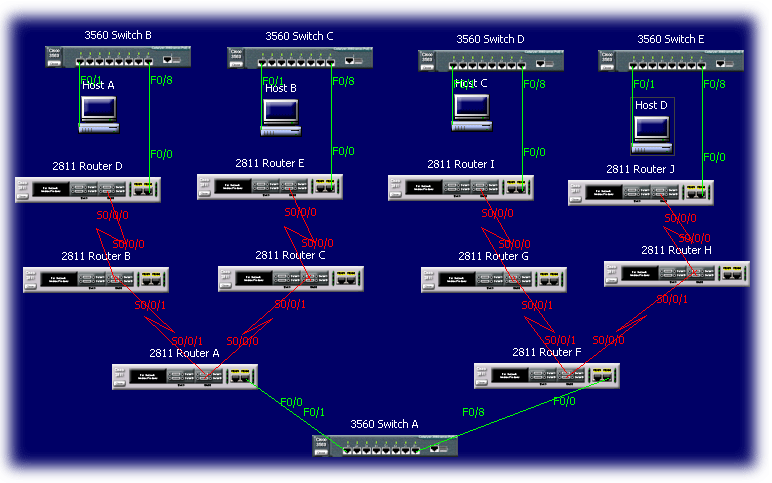
Configured Network Layout

Product Comparison
| Number of Labs | 110 | 190 | 230 | 275 |
Supported Configuration Methods | ||||
| Command Line | ||||
Security Device Manager (SDM) | ||||
Supported Routing Protocols | ||||
| RIP | ||||
| RIP v2 | ||||
| IPv4 Static Routing | ||||
| IPV6 RIPng | ||||
| IGRP | ||||
| EIGRP | ||||
| EIGRP Summarization | ||||
| OSPF (Single area) | ||||
| IPv6 Static Routing | ||||
| Route Redistribution | ||||
| EIGRP Wildcard Masking | ||||
| BGP | ||||
| OSPF (Multi area) | ||||
| OSPF Stub Area | ||||
| OSPF Totally Stubby Areas | ||||
| IPv6 OSPFv3 | ||||
| IS-IS | ||||
| Policy Routing | ||||
Supported WAN Protocols | ||||
| Serial Point To Point (PPP) | ||||
| Serial HDLC | ||||
| Frame-Relay Point To Point (PPP) | ||||
Supported Switch Features | ||||
| VLANs | ||||
| VTP Trunking | ||||
| Spanning Tree Root Bridges | ||||
| Layer 3 Routing | ||||
| Spanning Tree UplinkFast | ||||
| Spanning Tree PortFast | ||||
Supported Security Features | ||||
| NAT | ||||
| OSPF Authentication | ||||
| CHAP | ||||
| Access Lists | ||||
| EIGRP Authentication | ||||
| AAA (TACACS+) (LAN and WAN) | ||||
| IPSEC (Site to Site VPN's) | ||||
| PAP | ||||
| VLAN Access Control Lists | ||||
Supported Addressing Schemes | ||||
| IPv4 | ||||
| DHCP | ||||
| VLSM | ||||
| IPv6 | ||||
| IP Multicasting | ||||
Quality of Service | ||||
| Class Based Queuing (LAN and WAN) | ||||
| Frame Relay Traffic Shaping | ||||
| Backup Serial Interfaces | ||||
Supported LAN Media | ||||
| FastEthernet (100Meg) | ||||
| Ethernet (10Meg) | ||||
| GigabitEthernet | ||||
Supported Cable Media | ||||
| Crossover | ||||
| Straight-through | ||||
| 4 Wire WAN Cable (DS1) | ||||
Skills Assessment Features | ||||
| Trouble Shooting Scenario's | ||||
| Practice Configuration Scenario's | ||||
| Lab Grading Function |








